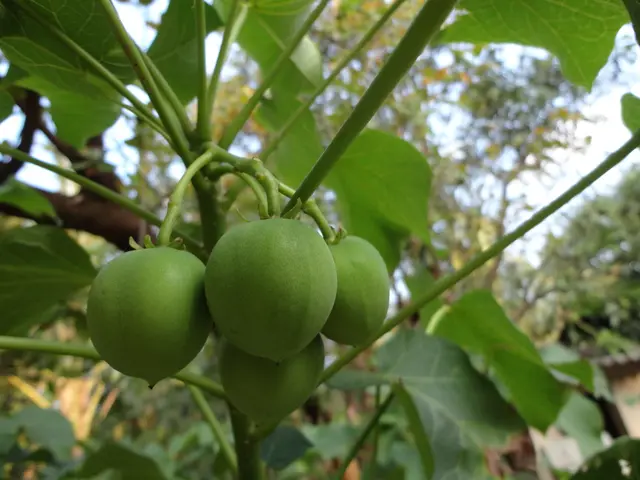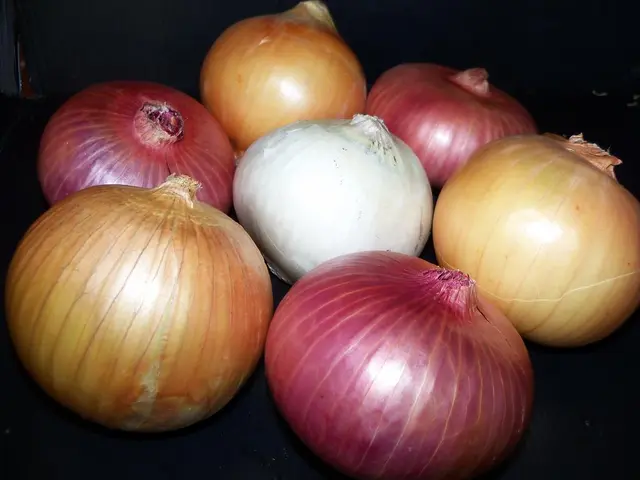Garden Enhancements: Consider Lava Mulch or Mulching Mower for Optimal Growth
Mulching: Enriching Soil and Improving Lawn Growth
By: Franziska Schloegl
Mulching is an effective gardening method that offers numerous benefits for your plants and lawn. By understanding the different types of mulch and their appropriate uses, you can create a healthier and more successful garden.
Mulch plays a crucial role in enriching your garden beds with nutrients, improving soil quality, and encouraging better lawn growth. When used correctly, it protects the soil from erosion, prevents drying out, and acts as a barrier against unwanted weeds. However, it's essential to choose the right mulch for each plant type to ensure their optimal health.
The Importance of Mulching
Properly applied mulch helps the soil maintain its moisture by minimizing evaporation. This results in reduced watering requirements, making the process more efficient. Additionally, a layer of mulch blocks sunlight, hindering weed seeds from germinating, thus keeping your garden beds clean and safe.
Mulch also functions as an insulator for both cold and warm weather, helping maintain soil temperature and reducing fluctuations. Over time, organic materials break down and convert into beneficial humus, which contributes to a more fertile soil structure.
Choosing the Right Mulch
There exist various types of mulch, each with its unique advantages and applications. Some of the most common mulch options include bark mulch, grass clippings, lava mulch, straw, and leaves.
Bark Mulch
Suitable for perennial beds, paths, and ornamental trees, bark mulch effectively suppresses weeds without placing undue stress on plants. However, it can bind nitrogen, so it's recommended to apply a slow-release fertilizer prior to mulching. A layer of 7-10 cm is ideal when using bark mulch, but it should not be used on vegetables and herbs or applied directly to roses.
Roses and Bark Mulch: A Caution
Roses are sensitive to bark mulch due to its acidifying effect and potential to deplete soil nutrients, negatively impacting growth and overall plant health.
Grass Clippings
Grass clippings make an excellent choice for mulching vegetable beds. After drying slightly to prevent rotting, they can be spread in layers up to 5 cm thick. Decomposing quickly, grass clippings promote soil fertility while also serving as a summer-time fertilizer for lawns.
Lava Mulch
A durable and visually appealing choice, lava mulch does not decompose and remains long-lasting. It offers excellent weed suppression and helps moderate soil temperature, making it ideal for both summer heat and winter frost protection. A 6-8 cm layer is recommended for lava mulch.
Straw
Straw serves as a protective barrier over strawberries, preventing overly wet soil conditions that can foster mold or rot. Apply the layer after the main flowering period, once the soil has warmed up.
Leaves
Leaves make an excellent organic mulch, particularly for use under shrubs and trees. However, it's essential to ensure the leaves are not infested with pests or diseases before using them as mulch. Apply a 5 cm layer of shredded leaves for better decomposition and soil integration.
Mulching Mower: Efficient Lawn Care
A mulching mower offers an all-in-one solution for lawn care, chopping up grass clippings and distributing them directly as mulch on your lawn. Grass clippings enrich the soil, promote grass growth, and help prevent thatch and moss formation.
When considering purchasing a mulching mower, ensure it has an adjustable cutting height and finely chops grass clippings for quick decomposition.
For additional gardening insights, explore the regular newsletter from our partner 24garten.de.
Mulch Overall Best Practices
To achieve the best results from your mulch, ensure you follow some essential guidelines:
- Prepare the soil surface by removing weeds, rocks, and debris before mulching.
- Apply mulch in layers 2-4 inches thick for effective moisture retention and weed suppression.
- Maintain a lvoid between the mulch and plant stems and trunks (1-2 inches for stems, 3-6 inches for trunks), to prevent rot and pest issues.
- Refresh and refresh your mulch once or twice a year, as it decomposes or displaces.
- Spread the mulch evenly and taper the edges, creating a clean visual boundary and avoiding suffocation of plants.
Mulching and Soil Nutrients, Weed Growth, and Plant Health
| Mulch Type | Soil Nutrients | Weed Growth Suppression | Plant Health Impact ||----------------|------------------|------------------------|---------------------|| Bark Mulch | Slow nutrient | Very effective | Protects roots and stabilizes moisture and temperature || Lava Mulch | No nutrient | Highly effective | Improves drainage, durable, no decomposition || Grass Clippings| Adds nutrients | Moderate | Enhances soil fertility and promotes grass growth || Straw | Adds nutrients | Good | Regulates moisture and temperature, good for veggies || Leaves | Adds nutrients | Moderate | Improves soil structure and microbial health |
Mulching not only enriches home-and-garden beds, but also improves the overall lifestyle by promoting healthier and more successful plants. When choosing the right mulch, like bark mulch for perennial beds and grass clippings for vegetable beds, consider each plant type's specific needs. Properly applied mulch in a layer of 2-4 inches can help maintain soil moisture, suppress weeds, and contribute to a more fertile soil structure.








